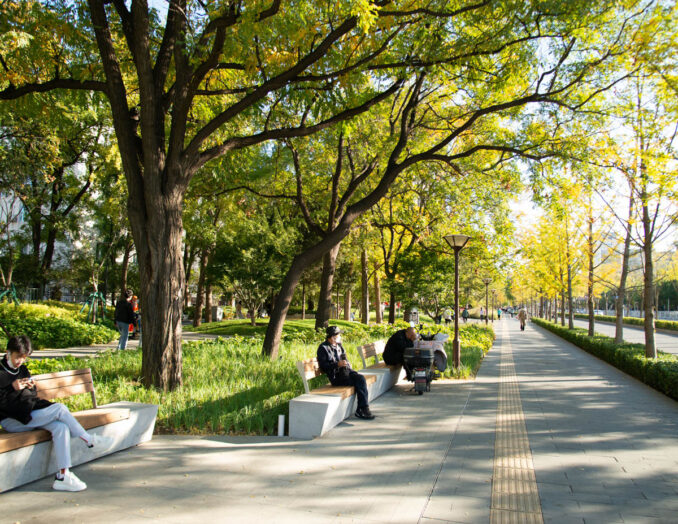
The Beijing Zhongguancun Avenue Urban Park Renovation Project transformed an outdated, inaccessible streetside green buffer into a pedestrian-friendly, ecologically oriented, interactive public space.
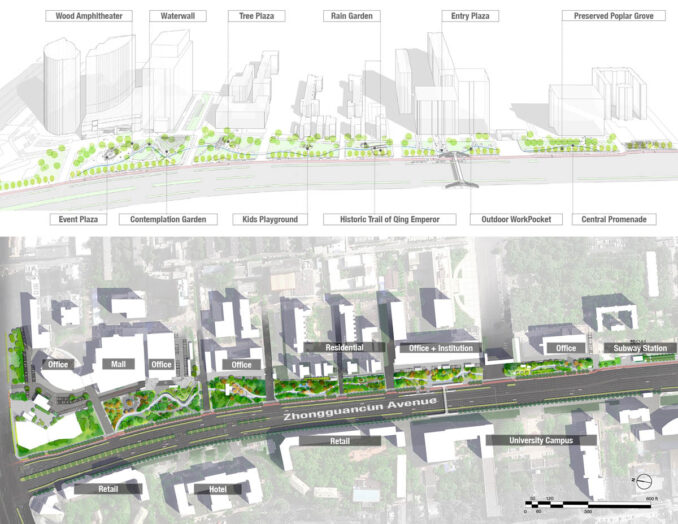
The project encompasses an area of 9.8 acres, connecting multiple properties of various usage in a span of 0.6 miles along Zhongguancun Avenue. Top universities, libraries, and pioneering I.T. companies are located in this well-known landmark. Initiated with planning and design in 2019, the project took only 3 years to implement a site in bustling surroundings to a public realm that offers fresh amenities and experiences for adjacent neighborhoods, businesses, and retail.
It established a prototype that has elevated land value and public well-being by renovating the landscape without massive demolition and construction for similar projects in Beijing. The project also incorporated several challenges, including complicated coordination among over 30 government and private entities authorities, the intention of least impact on the surroundings, and a fast but precise construction under unpredictable site conditions during the pandemic.
History Background
Zhongguancun Avenue, formerly known as “Baiyi Road”, was a historic path for the Royals of Qing Dynasty’s expedition to the Summer Palace from the Forbidden City. Nowadays, this linear urban corridor is linking well-known destinations such as Tsinghua University, National Library of China, Zhongguancun High Tech District, etc. It is not only a street but also a symbol of the booming times and technology in past decades. It is also the only avenue/street in China included as a precedent in the book ‘Great Street’ by Allan B. Jacobs ( Former Chair of the Department of City and Regional Planning, UC Berkeley), cited as “a great boulevard formed by poplar trees”.
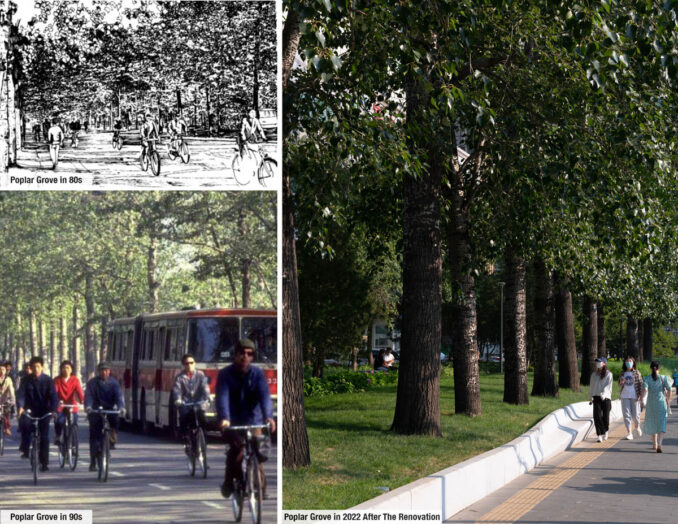
Key Problems Before
1. Damaged ecology and insufficient sustainability due to undermaintained plantings and old infrastructure.
2. Pedestrians didn’t have the right of way, and the sidewalk was barely not walkable.
3. Very little occupiable and programmed space for people.
4. Lack of identity, culture, and history.
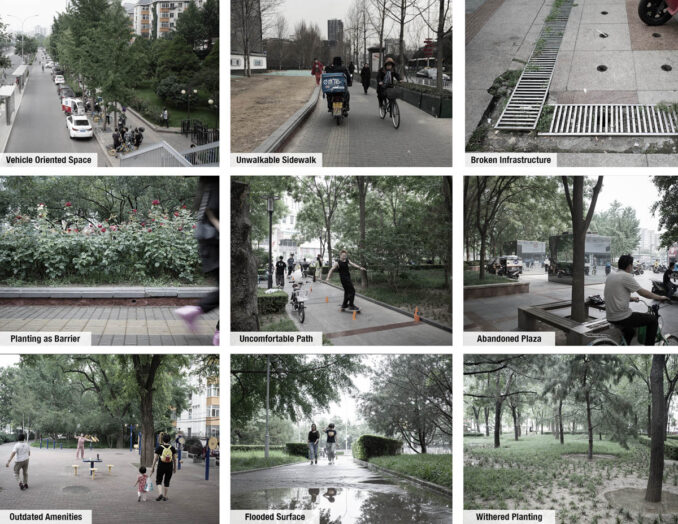
Restoring the ecology
Over 500 original big trees are preserved, creating a continuous and undulating green shade in an urban context scale while offering a cool and pleasant walking experience at human scales. Especially for the grove of historical poplar trees on the south end near the subway station, the redesign keeps original soil conditions and offers new modern aesthetics to their retaining walls. By descending 65% of soil grade to the ground level, removing chaotic shrubs, and regrading 27% of planting areas, the site allows more surface runoffs and rainwater from paving areas to infiltrate. Therefore, the original drainage infrastructure system underneath is not easily overloaded during a monsoon season.
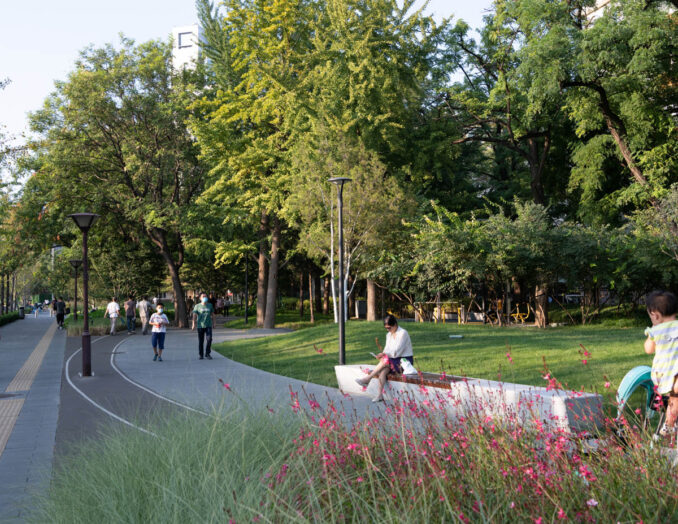
Prioritizing the pedestrian
The parking space along the curb was relocated so that the space along the street, including the sidewalk, is entirely returned to bicycles and pedestrians. Besides the new sidewalk, a meandering 0.85-mile promenade as a park spine is introduced to increase the quality and efficiency of walking through the site. New seating benches are placed along the promenade every 160ft, allowing pedestrians to have opportunities to rest.
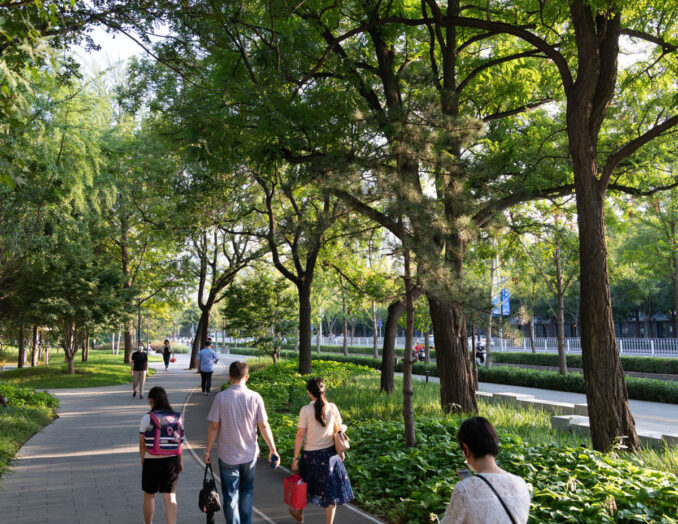
Weaving the Scattered Pocket Space
After the renovation, the original abandoned pocket spaces in various scales are activated again by the central promenade. The pockets themselves are revitalized into a series of meeting rooms, kids’ playgrounds, outdoor workstations, event plazas, amphitheaters, etc., redesigned more modern and simple. They are fully accessible and inclusive within a park environment for the surrounding residents, workers, entrepreneurs, and shoppers to stay, chill, meet, and interact. It reconnects the scattered space and inspires people’s new lifestyle and social vitality.
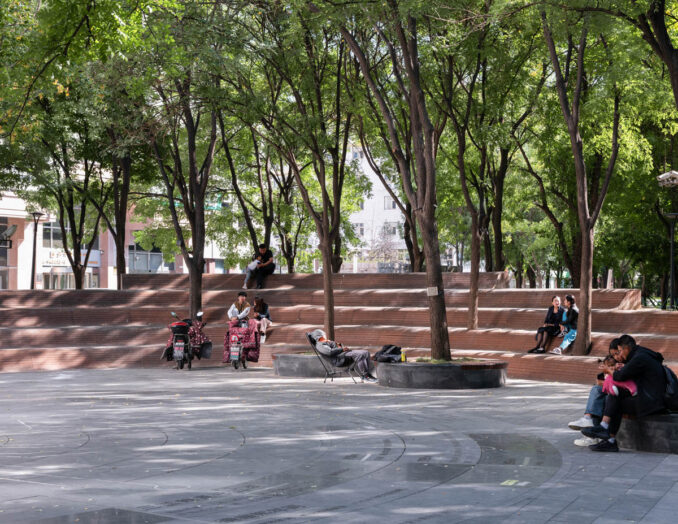
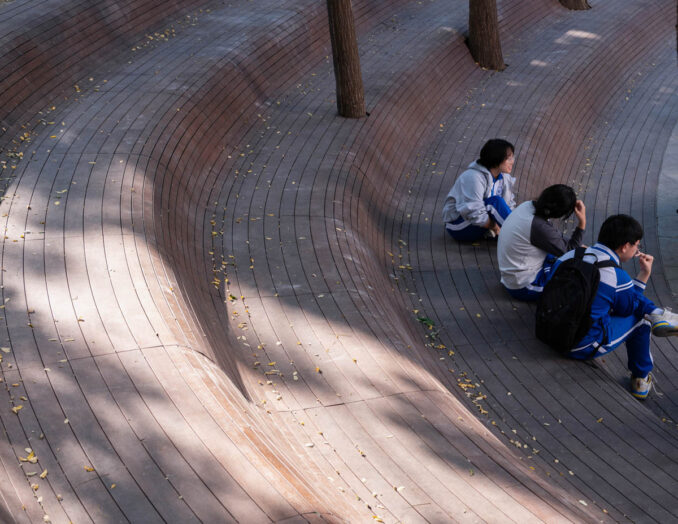
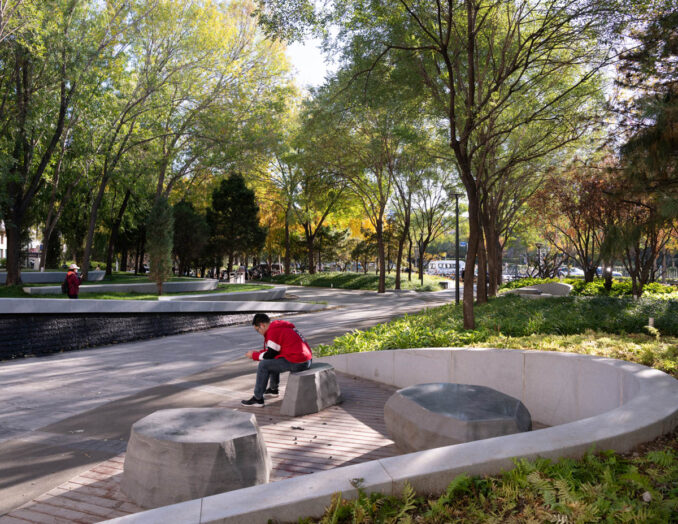
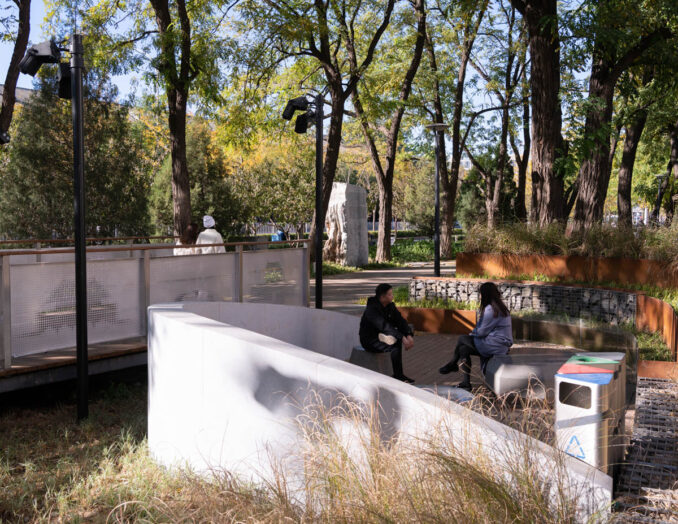
Rebuilding the Identity
A small portion of the Emperor’s Royal Path is reinstalled in a similar width and stone paving materials, reminding the public of the site’s history and culture. The other important feature that makes the site a landmark is the labyrinth paving on the event plaza, which is engraved with the key milestones of the development of Zhongguancun Avenue in the last 50 years. In addition, integrating advanced technologies such as solar panel recycle bins, sustainable outdoor workstations, and interactive lighting fixtures provides up-to-date user experiences. The project also creates a physical outdoor space to showcase new technology and products, for high-tech enterprises in the district.
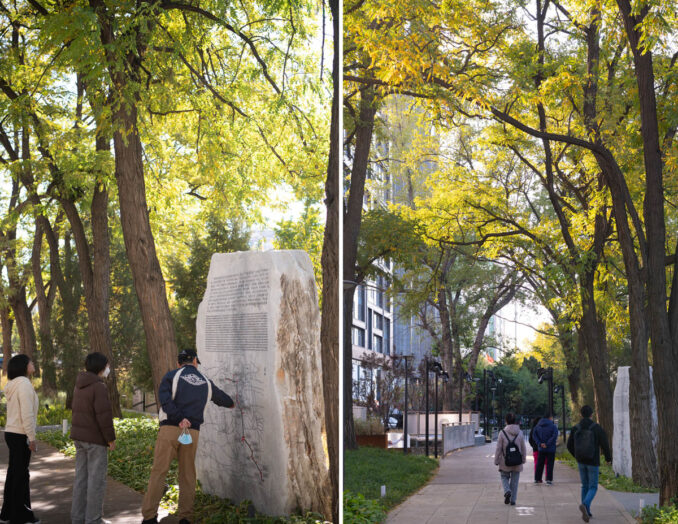
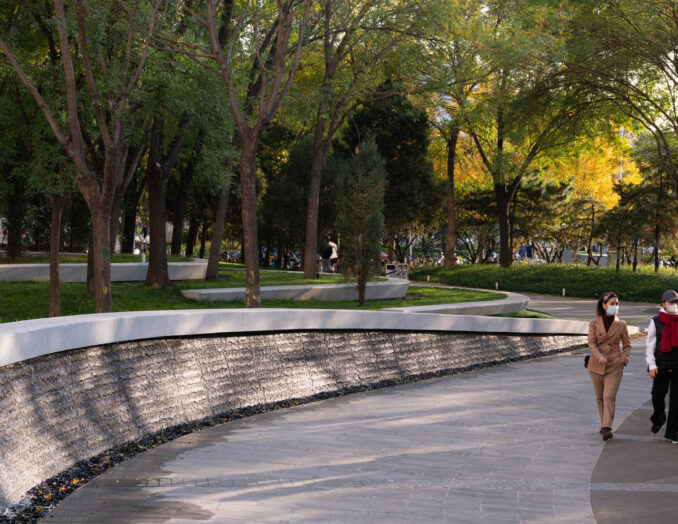
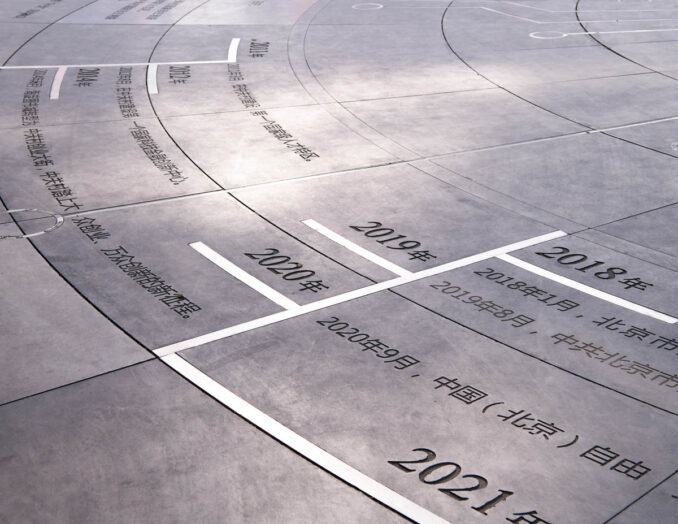
Precise Construction Management and Community Involvement
The project’s success was accentuated during the pandemic, providing an opportunity to recreate and interact safely within an urban space surrounded by a dense population. It also solved the conflict to existing use ( pedestrian circulation, adjacent business, vehicle flows), by segmenting the construction by street blocks and prioritizing the implementation of the promenade/sidewalk. Careful planning to mitigate impacts on the existing businesses and residents during 2-year construction preserved the district’s diverse character, while the design finally enhanced its attributes.
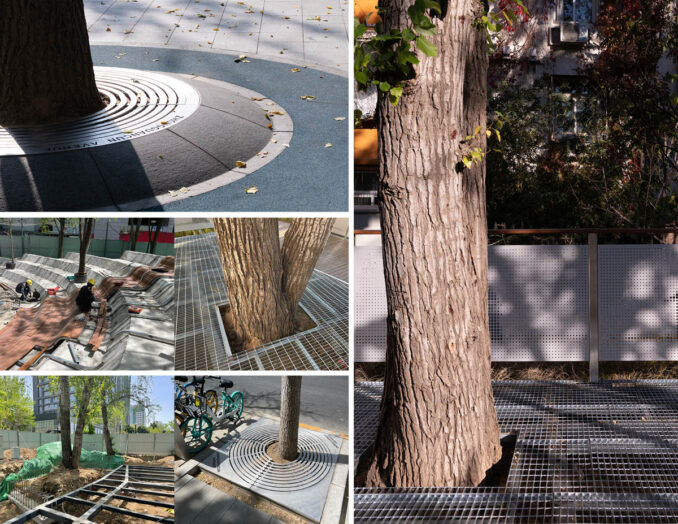
During the design process, we insisted that the project was for people and the adjacent community. Through two rounds of surveys, seven community meetings, and other forms of feedback, the demands from nearby residents, enterprises, and scientific research institutes were fully understood and incorporated into the project so that, in the end, everyone could feel himself/herself as a key partner of our living urban environment.
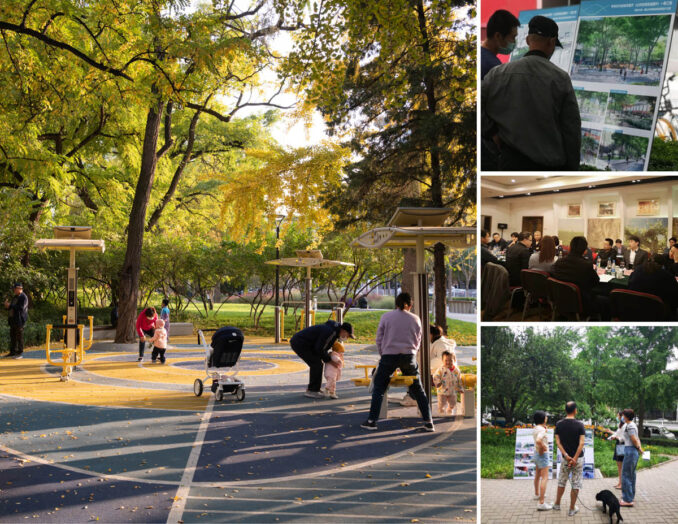
Zhongguancun Avenue Urban Park Renovation
Location: Beijing, P.R. China
Landscape Architect: Instinct Fabrication
Images Credit: Instinct Fabrication
